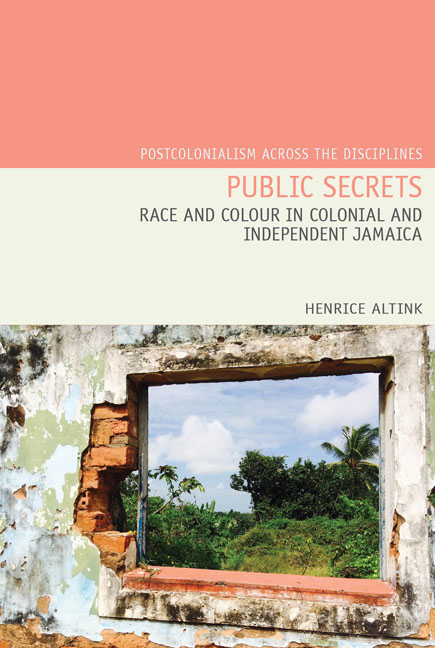Book contents
5 - The Silence and Salience of Race
Summary
Like many other countries, Jamaica has adopted a Vision 2030 to implement the UN's Millennium Development Goals and achieve developed nation status by 2030. This national development plan is guided by several principles, including ‘equity’ – to ensure ‘equality of opportunity and equal rights for all citizens’. Although Vision 2030 mentions gender and sexual discrimination, it does not, like those of some other countries, include a commitment to end race and colour discrimination. Like the reports that Jamaica submitted to the CERD in the 1960s and 1970s, then, Jamaica's Vision 2030 presents a nation that has overcome the problem of race and colour. Drawing upon newspaper accounts, social studies, reports, blogs, and other sources, the first section of this chapter contrasts this silence on race with the salience of race in contemporary Jamaica. It will provide evidence that Jamaican society remains marked by differential treatment and opportunities based on race and colour and that similar rhetorical strategies as in the past are used to deny their importance.
The second section provides an explanation for the ‘absent presence’ of race in Jamaica from 1918 till the present. Drawing upon the work of the American sociologist Barbara Reskin on racial inequality, it will argue that discrimination in different domains – employment, education, the criminal justice system, etc. – are linked, and that because of cumulative (dis)advantage, many race-neutral practices have exerted racial effects which, along with differential treatment based on race or colour, have upheld a racially stratified society. It also suggests that the image of Jamaica as a racial paradise has done much to keep race a public secret and that it was not just the vested interests of some groups in society that enabled the continuation of a colour-class hierarchy. The final section of this chapter moves from the past and present to the future. As a historian, it is beyond my expertise to offer suggestions on how to ensure that all citizens will have ‘equality of opportunity’ regardless of race or colour, so what this section offers instead is a starting point for a discussion to change the racial status quo.
Race in contemporary Jamaica
Reforms of the electoral system in the 1990s and the formation of an independent electoral commission in 2006 have removed opportunities for fraud but this has not eliminated violence.
- Type
- Chapter
- Information
- Public SecretsRace and Colour in Colonial and Independent Jamaica, pp. 209 - 236Publisher: Liverpool University PressPrint publication year: 2019



